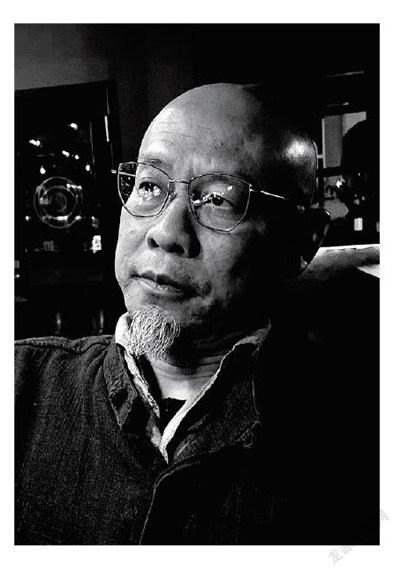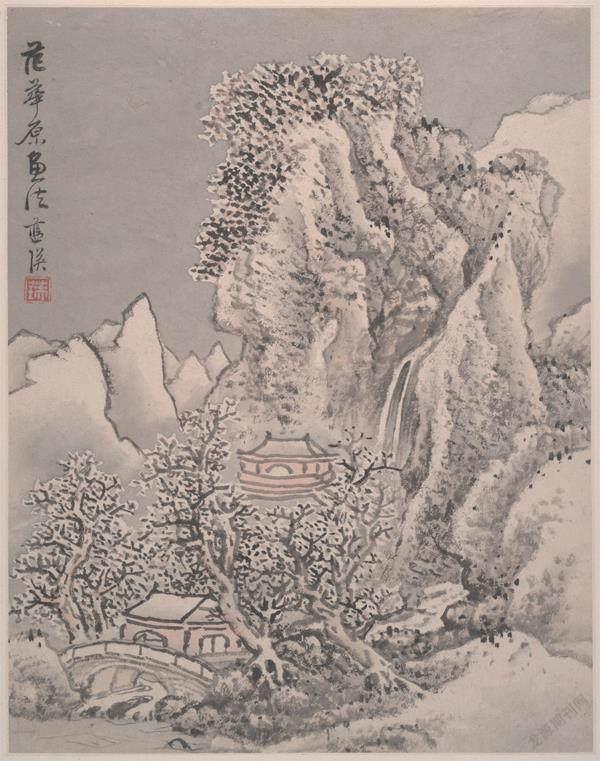设计巴巴工作室
旋转泵
旋转泵应用于不同的设计中,在流体动力系统中极其常用。今天最常用的旋转泵是外齿轮泵、内齿轮泵、摆线转子泵、滑动叶片泵和螺旋泵。每种类型的泵都有优点,适合于特定场合的应用。
直齿齿轮泵,这种泵有两个啮合的齿轮在密封壳体内转动。第一个齿轮即主动轮的回转引起第二个齿轮即从动轮的回转。驱动轴通常连接到泵上面的齿轮上。
当泵首次启动时,齿轮的旋转迫使空气离开壳体进入排油管。这种泵内空气运动使泵吸入口处形成了真空,于是外部油箱的液体在大气压的作用下,由泵的入口进入,聚集在上下齿轮和泵壳体之间,齿轮连续的旋转使液体流出泵的出口。
直齿齿轮泵的压力的升高是由挤压啮合齿轮和腔体内的液体产生的。当齿轮脱开啮合时,腔内形成真空,使更多的液体被吸入泵内。直齿齿轮泵是定排量的元件,当轴转速不变时,输出流量恒定。只有一种方法即改变输入轴的转速,能调节这种直齿齿轮泵的排量。现代应用在流体动力系统的齿轮泵的压力可达3000psi。
图示为直齿齿轮泵的典型特性曲线。这些曲线表明了泵在不同速度下的流量和输入功率。当速度给定时,流量曲线接近于一条水平的直线。泵的流量随出口压力的升高而稍有降低,这是由于泵的出油口到吸油口的齿轮径向泄漏所增加而造成的。渗漏有时定义为泄漏,泵出口压力的增加也会使泄漏增加。表征泵的出口压力和流量之间关系曲线常叫做水头流量曲线或泵的HQ曲线;泵的输入功率和泵流量关系曲线叫做功率流量特性曲线或PQ曲线。
直齿齿轮泵的输入功率随输入速度和出口压力的增加而增加。随着齿轮泵速度的增加,流量(加仑/分)也增加。于是在出口压力为120psi,转速为200rpm时,输入功率是5马力。在转速为600rpm时,输入功率是13马力。纵坐标压力是120psi,横坐标是200rpm和600rpm时,在HQ曲线上可以读出相应的流量分别为40gpm和95gpm。
图示是直齿齿轮泵在粘度不变时的情况。随着流体粘度的增加(即流体变稠,不易流动),齿轮泵的流量降低。粘稠的流体在油泵高速运转时,因为这种流体在油泵中不能迅速进入泵体完全充满真空区,所以油流量受到限制。图示为在流体动力系统中流体粘度的增大对旋转泵工作情况的影响。当流体的粘度值为100SSU,出口压力为80psi时,泵流量为220gpm。当流体的粘度值为500SSU时,泵流量减少到150gpm。由功率特性曲线可知,泵输入功率也会增加。
可以用齿轮或其他内部元件每转一圈输出多少加仑来表示泵的流量。如果封闭定量泵的出口,则出口压力将会增加,直至驱动马达停止或泵内其他部分或排油管破裂。由于存在着破裂的危险,几乎所有的流体动力系统都安装压力溢流阀。这种溢流阀可安装在泵内,也可安装在排油管路。
滑动式叶片泵
这些泵有大量的叶片,叶片能在转子的槽内自由的滑进滑出。当驱动转子时,离心力,弹簧或压力油使叶片伸出槽子,顶在泵壳体的内腔或凸轮环上。随着转子的旋转,叶片之间的流体经过吸油口时,完成吸油。流体顺着泵壳体到达排出口。在排出口,流体被排出,进入排油管。
图示的滑动式叶片泵中的叶片安装在椭圆形的腔内。当转子开始旋转时,离心力使叶片伸出槽子。同时叶片又受到其底部腔内压力油的作用力,压力油来源于槽子端部的配流盘。吸油口通过A和A1口相通,他们位于直径的相对位置。同样两排油口位于类似的位置。油口这样配置,使叶片转子保持压力平衡,从而使轴承不受重载影响。当转子逆时针旋转时,从吸油管出来的流体进入A和A1口,聚集在叶片之间,沿周向流动后,通过B和B1口排出。这样设计的泵压力可达2500psi。的泵必须分级才能达到这么大的压力,而现在用一级泵即可达到。在转子上应用均流均压阀可以达到高压。转速通常限制在2500rpm这是因为考虑到离心力和凸轮环表面叶片之间的磨损。图示为泵在转速为1200rpm粘度在100F的条件下的特性曲线。
每个槽内安装两个叶片可以控制其作用于壳体内部和凸轮环上的力。双叶片会产生更紧的密封,能减少从排油口到吸油口之间的泄漏这种入口和出口相对应的设计也能维持液压平衡。这些都是定量泵。
不改变转速就不能改变叶片泵的流量,除非油泵采用特殊设计。图示为滑动式变量叶片泵。它不用双吸油和排油口。转子在压力腔内转动,转子形成的偏心量是可调的。随着偏心的程度或偏心率的变化,流体的流量也随着变化。图示为转子在旋转180°范围内,产生一真空度以便于油液进入,同时压油区也在180°范围内旋转。吸油区和压油区的起始段梢有重叠。
图示,在最小的工作压力下可以得到最大的流量。随着压力的升高,流量按预设的规律减少。当流量减到最小值,压力增大到最大值。泵只需要提供补充回路中元件滑动配合间隙中泄漏流体。
这种变量泵的设计可以保护管路,溢流阀不是必须的。其他回路中,为阻止局部压力超过正常压力水平,可以用安全阀或溢流阀来控制。
为了自动控制流量,采用可变弹簧负载调节器。安装这种调节器,泵的出口压力作用于活塞或定子内表面,压缩的弹簧产生位移。如果泵的出口压力高于调节器弹簧的设定值时,弹簧被压缩。这使压力环(定子)移动,减少相对于定子的偏心量,于是,泵的流量减少,得到所需的压力。这种油泵设计的出口压力在100psi和2500psi之间。
图示为变量泵补偿器的特性,标出输入功率值,可以准确计算所需的输入功率。变量泵可以预先设定不同压力值的变化规律。高低压泵控制既能提供有效的卸荷回路,也能为先导控制回路提供足够压力。
图示阴影区域为变量泵在背压100psi压力下的闭式回路。油液以100psi卸荷阀或溢流阀排出,可以维持正常的控制回路压力,这些是消耗的功率。两级压力控制回路包括:先导液压控制和电磁控制。图示负号表示电磁铁不带电,先导控制油回油箱。于是泵排出的控制油的力小于调节器弹簧力,所以得到最小压力。图示正号为电磁铁带电,控制油的力大于调节器弹簧力。与简单的溢流阀原理一样,小球和弹簧决定控制力的大小。这样预先设定最大工作压力。
另一种两级压力控制系统是利用所谓的差动卸荷调节器。它应用于高低压或双泵回路中。调节器通过压力传感器自动卸荷大流量泵以达到最小的空载压力设定值。空载压力指的是由于变量泵控制机构工作所形成的特定压力。泵的实际空载流量等于系统的泄漏量与控制流量之和。当泵空载时,即使液压系统在提供加紧或保压作用,也不会需要较大的功率。
调节器是液压操纵的,差动活塞带有双压力控制,当外部控制压力作用于控制卸荷口时,差动活塞允许完全卸荷。
空载压力的最小设定值由调节器主弹簧A控制。最大压力由溢流阀调节点B控制。调节器的操作压力由大容积泵提供,从小孔C进入。
为了说明如何使用这种装置,假设回路需要1000psi的最大压力,由一个5-gpm来提供。在压力达到500psi时,需要大流量(40gpm),继续上升到1000psi,流量减少。由流量为40-gpm的带有卸荷调节器的泵组成的双泵系统可满足要求。
我们可以把40-gpm的泵从500psi卸荷压力调整至200psi最小设定压力(或另一需求值),这样5-gpm泵可以使回路达到1000psi或更高压力。
图中为双泵系统控制压力源。由一个40-gpm的泵提供调节器腔内压力,就可以达到最大设定压力。弹簧设定力加上调节器的腔内压力共同决定了40-gpm泵的最大压力。第二个控制源是特殊的回路,它能达到1000psi。控制油通过小孔D进入调节器作用于卸荷活塞E。活塞E面积比安全阀中提动阀F的有效面积大15%。因此卸荷差动力大约为15%。调节器将在500psi卸荷,会在500psi以下15%或425psi时起作用。这里所谓的卸荷,指的是40-gpm的泵无输出量。
随着回路中压力从0到500psi的增加,调节器腔内的压力也随着增加,直到溢流阀的设定值时,溢流阀打开,流体流出油箱。
调节器腔内的压力降是最大的叠加值,允许油泵达到卸荷状态。同时,当系统压力继续增加超过700psi时,导致活塞E最底部的压力比顶部的压力大。活塞使提升阀F完全打开,溢流提升阀全部开启导致调节器腔内压力进一步下降至零。流体通过小孔C进入调节器腔,经过溢流提升阀直接回油箱,不增加调节器腔内的压力。40-gpm的泵卸荷压力可以减小至更低的设定值。调整卸荷调节器,40-gpm的泵达到卸荷。随着压力到1000psi,回路的流量减至5gpm。在1000psi时,5-gpm泵也达到卸荷设定,于是流量仅仅维持系统压力。在500psi时,40-gpm的油泵卸荷。需要600psi的系统压力把40gpm的泵卸荷到最小压力200psi。600psi的先导控制油通过孔D进入并作用于差动活塞E。在500psi时,泵流量减少到零。100psi的附加压力需要完全打开提升阀,使调节器腔内的压力减小至零。当回路压力减小时,两个泵以同样的方式来工作。
Rotary pumps
These are built in many different designs and are extremely popular in modern fluid-power system. The most common rotary-pump designs used today are spur-gear, generated-rotary , sliding-vane ,and screw pump ,each type has advantages that make it the most suitable for a given application .
Spur-gear pumps. these pumps have two mating gears are turned in a closely fitted casing. Rotation of one gear ,the driver causes the second ,or follower gear, to turn . the driving shaft is usually connected to the upper gear of the pump .
When the pump is first started ,rotation of gears forces air out the casing and into the discharge pipe. this removal of air from the pump casing produces a partial vacuum on the pump inlet ,here the fluid is trapped between the teeth of the upper and lower gears and the pump casing .continued rotation of the gears forces the fluid out of the pump discharge .
Pressure rise in a spur-gear pump is produced by the squeezing action on the fluid ad it is expelled from between the meshing gear teeth and casing ,.a vacuum is formed in the cavity between the teeth ad unmesh, causing more fluid to be drawn into the pump ,a spur-gear pump is a constant-displacement unit ,its discharge is constant at a given shaft speed. the only way the quantity of fluid discharge by a spur-gear pump of type in figure can be regulated is by varying the shaft speed .modern gear pumps used in fluid-power systems develop pressures up to about 3000psi.
Figure shows the typical characteristic curves of a spur-gear rotary pump. These curves show the capacity and power input for a spur-gear pump at various speeds. At any given speed the capacity characteristic is nearly a flat line the slight decrease in capacity with rise in discharge pressure is caused by increased leakage across the gears from the discharge to the suction side of the pump. leakage in gear pumps is sometimes termed slip. Slip also increase with arise pump discharge pressure .the curve showing the relation between pump discharge pressure and pump capacity is often termed the head-capacity or HQ curve .the relation between power input and pump capacity is the power-capacity or PQ curve .
Power input to a squr-gear pump increases with both the operating speed and discharge pressure .as the speed of a gear pump is increased. Its discharge rate in gallons per minute also rise . thus the horsepower input at a discharge pressure of 120psi is 5hp at 200rpm and about 13hp at 600rpm.the corresponding capacities at these speed and pressure are 40 and 95gpm respectively, read on the 120psi ordinate where it crosses the 200-and 600-rpm HQ curves .
Figure is based on spur-gear handing a fluid of constant viscosity , as the viscosity of the fluid handle increases (i.e. ,the fluid becomes thicker and has more resistance to flow ),the capacity of a gear pump decreases , thick ,viscous fluids may limit pump capacity t higher speeds because the fluid cannot into the casing rapidly enough fill it completely .figure shows the effect lf increased fluid biscosity on the performance of rotary pump in fluid-power system .at 80-psi discharge pressure the pp has a capacity lf 220gpm when handling fluid of 100SSU viscosity lf 500SSU . the power input to the pump also rises ,as shown by the power characteristics.
Capacity lf rotary pump is often expressed in gallons per revolution of the gear or other internal element .if the outlet of a positive-displacement rotary pump is completely closed, the discharge pressure will increase to the point where the pump driving motor stalls or some part of the pump casing or discharge pipe ruptures .because this danger of rupture exists systems are filled with a pressure –relief valve. This relief valve may be built as of the pump or it may be mounted in the discharge piping.
Sliding-Vane Pumps
These pumps have a number of vanes which are free to slide into or out of slots in the pup rotor . when the rotor is turned by the pump driver , centrifugal force , springs , or pressurized fluid causes the vanes to move outward in their slots and bear against the inner bore of the pump casing or against a cam ring . as the rotor revolves , fluid flows in between the vanes when they pass the suction port. This fluid is carried around the pump casing until the discharge port is reached. Here the fluid is forced out of the casing and into the discharge pipe.
In the sliding-vane pump in Figure the vanes in an oval-shaped bore. Centrifugal force starts the vanes out of their slots when the rotor begins turning. The vanes are held out by pressure which is bled into the cavities behind the vanes from a distributing ring at the end of the vane slots. Suction is through two ports A and AI, placed diametrically opposite each other. Two discharge ports are similarly placed. This arrangement of ports keeps the rotor in hydraulic balance, reliving the bearing of heavy loads. When the rotor turns counterclockwise, fluid from the suction pipe comes into ports A and AI is trapped between the vanes, and is carried around and discharged through ports B and BI. Pumps of this design are built for pressures up to 2500 psi. earlier models required staging to attain pressures approximating those currently available in one stage. Valving , uses to equalize flow and pressure loads as rotor sets are operated in series to attain high pressures. Speed of rotation is usually limited to less than 2500rpm because of centrifugal forces and subsequent wear at the contact point of vanes against the cam-ring surface..
Two vanes may be used in each slot to control the force against the interior of the casing or the cam ring. Dual vanes also provide a tighter seal , reducing the leakage from the discharge side to the suction side of the pump . the opposed inlet and discharge port in this design provide hydraulic balance in the same way as the pump, both these pumps are constant-displacement units.
The delivery or capacity of a vane-type pump in gallons per minute cannot be changed without changing the speed of rotation unless a special design is used. Figure shows a variable-capacity sliding-vane pump. It dose not use dual suction and discharge ports. The rotor rums in the pressure-chamber ring, which can be adjusted so that it is off-center to the rotor. As the degree of off-center or eccentricity is changed, a variable volume of fluid is discharged. Figure shows that the vanes create a vacuum so that oil enters through 180 of shaft rotation. Discharge also takes place through 180 of rotation. There is a slight overlapping of the beginning of the fluid intake function and the beginning of the fluid discharge.
Figure shows how maximum flow is available at minimum working pressure. As the pressure rises, flow diminishes in a predetermined pattern. As the flow decreases to a minimum valve, the pressure increases to the maximum. The pump delivers only that fluid needed to replace clearance floes resulting from the usual slide fit in circuit components.
A relief valve is not essential with a variable-displacement-type pump of this design to protect pumping mechanism. Other conditions within the circuit may dictate the use of a safety or relief valve to prevent localized pressure buildup beyond the usual working levels.
For automatic control of the discharge , an adjustable spring-loaded governor is used . this governor is arranged so that the pump discharge acts on a piston or inner surface of the ring whose movement is opposed by the spring . if the pump discharge pressure rises above that for which the by governor spring is set , the spring is compressed. This allows the pressure-chamber ring to move and take a position that is less off center with respect to the rotor. The pump theb delivers less fluid, and the pressure is established at the desired level. The discharge pressure for units of this design varies between 100 and 2500psi.
The characteristics of a variable-displacement-pump compensator are shown in figure. Horsepower input values also shown so that the power input requirements can be accurately computed. Variable-volume vane pumps are capacity of multiple-pressure levels in a predetermined pattern. Two-pressure pump controls can provide an efficient method of unloading a circuit and still hold sufficient pressure available for pilot circuits.
The black area of the graph of figure shows a variable-volume pump maintaining a pressure of 100psi against a closed circuit. Wasted power is the result of pumping oil at 100psi through an unloading or relief valve to maintain a source of positive pilot pressure. Two-pressure –type controls include hydraulic, pilot-operated types and solenoid-controlled, pilot-operated types. The pilot oil obtained from the pump discharge cannot assist the governor spring. Minimum pressure will result. The plus figure shows the solenoid energized so that pilot oil assists compensator spring. The amount of assistance is determined by the small ball and spring, acting as a simple relief valve. This provides the predetermined maximum operating pressure.
Another type of two-pressure system employs what is termed a differential unloading governor. It is applied in a high-low or two-pump circuit. The governor automatically, Through pressure sensing, unloads the large volume pump to a minimum deadhead pressure setting. Deadhead pressure refers to a specific pressure level established as resulting action of the variable-displacement-pump control mechanism. The pumping action and the resulting flow at deadhead condition are equal to the leakage in the system and pilot-control flow requirements. No major power movement occurs at this time, even though the hydraulic system may be providing a clamping or holding action while the pump is in deadhead position
The governor is basically a hydraulically operated, two-pressure control with a differential piston that allows complete unloading when sufficient external pilot pressure is applied to pilot unload port.
The minimum deadhead pressure setting is controlled by the main governor spring A. the maximum pressure is controlled by the relief-valve adjustment B. the operating pressure for the governor is generated by the large-volume pump and enters through orifice C.
To use this device let us assume that the circuit require a maximum pressure of 1000psi, which will be supplied by a 5-gpm pump. It also needs a large flow (40gpm) at pressure up to 500psi; it continues to 1000pso at the reduced flow rate. A two-pump system with an unloading governor on the 40-gpm pump at 500psi to a minimum pressure setting of 200psi (or another desired value) , which the 5-gpm pump takes the circuit up to1000psi or more.
Note in figure that two sources of pilot pressure are required. One ,the 40-gpm pump, provides pressure within the housing so that maximum pressure setting can be obtained. The setting of the spring, plus the pressure within the governor housing, determines the maximum pressure capacity of the 40-gpm pump. The second pilot source is the circuit proper, which will go to 1000psi. this pilot line enters the governor through orifice D and acts on the unloading piston E . the area of piston E is 15 percent greater than the effective area of the relief poppet F. the governor will unload at 500psi and be activated at 15percent below 500psi, or 425psi. By unloading, we mean zero flow output of the 40-gpm pump.
As pressure in the circuit increases from zero to 500psi, the pressure within the governor housing also increases until the relief-valve setting is reached, at which time the relief valve cracks open, allowing flow to the tank.
The pressure drop in the hosing is a maximum additive value, allowing the pump to deadhead. Meanwhile, the system pressure continues to rise above 700psi, resulting in a greater force on the bottom of piston E than on the top. The piston then completely unseats poppet F, which results in a further pressure drop within the governor horsing to zero pressure because of the full-open position of the relief poppet F. flow entering the housing through orifice is directed to the tank pass the relief poppet without increasing the pressure in housing. The deadhead pressure of the 40-gpm pump then decreases to the lower set value. Thus , at the flow rate to the unloading governor ,the 40gpm pump goes to deadhead. The flow rate to the circuit decreases to 5gpm as the pressure to 1000psi, the 5-gpm pump is also at its deadhead setting, thus only holding system pressure.The 4-gpm pump unloads its volume at 500psi. It requires a system pressure of 600psi to unload the 40-gpm pump to its minimum pressure of 200psi. the 600-psi pilot supply enters through orifice D and acts on the differential piston E. The pumps volume is reduced to zero circuit-flow output at 500psi. The additional 100-psi pilot pressure is required to open poppet F completely and allow the pressure within the housing to decrease to zero.As circuit pressure decreases ,both pumps come back into service in a similar pattern.
..............................................................................
..............................................................................
此处忽略!!!!!!!!





